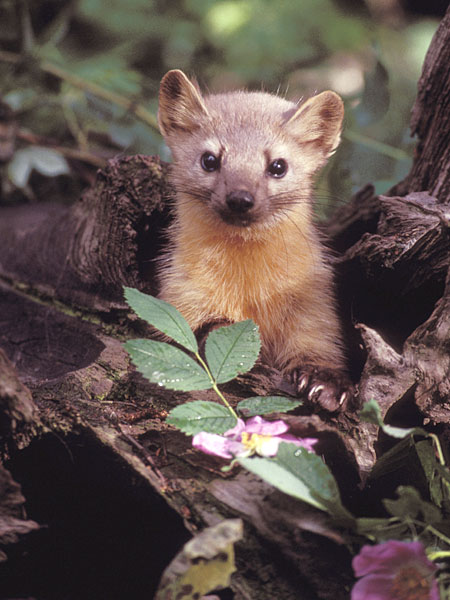
Marten have begun to reestablish in Vermont after being absent from the state for nearly a century. Photo courtesy of U.S. Fish & Wildlife Service.
The Vermont Fish & Wildlife Department believes there is an expanding population of American marten in Vermont. Marten are small carnivores in the weasel family. They are smaller than a housecat and are closely related to the more common and slightly larger fisher.
Though marten were extinct in Vermont by the early 1900s, evidence collected over the past two decades indicates that two small populations of marten have become established in the state. The frequency of recent sightings leads biologists to believe that the populations are expanding.
This expansion comes despite numerous obstacles, including the continued fragmentation of Vermont’s forests, competition with an abundant fisher population, and milder winters. Marten have been spotted on remote trail cameras and marten tracks have been identified in several locations.
“All of this evidence leads us to believe that there may be more marten out there than we had previously thought,” said Chris Bernier, furbearer biologist for the Fish & Wildlife Department.
According to Bernier, Vermont currently contains two distinct populations of marten. The population in the southern Green Mountains may have originated from 115 individuals that were released from 1989 to 1991 by U.S. Forest Service and Vermont Fish & Wildlife Department staff as part of a marten reintroduction effort.
Follow-up studies in the mid-1990s failed to capture any signs of the animals, leaving researchers to believe that the release was not successful. However, recent evidence of the presence of marten in this region indicates that some individuals may have become established as a result of this effort.
Vermont’s other marten population is in the Northeast Kingdom and likely originated from New Hampshire or Canada.
Fisher are a primary competitor of marten, occupying similar habitats and eating many of the same foods. Fisher have also been known to prey on marten themselves. Marten, however, take advantage of their small size in deep snow, hunting for rodents in tunnels beneath the snow that are inaccessible to fisher.
“It’s very encouraging to see these animals become established in Vermont,” said Bernier. “Marten depend on large blocks of unfragmented forests. Their return signals that land conservation efforts are paying off for marten and other rare species in Vermont, and that these large unfragmented forests are being properly managed by biologists and foresters.”
“Of the 17 marten that wildlife biologists have been able to examine to date, 15 were juveniles providing evidence that marten are reproducing and are potentially expanding in Vermont,” said Bernier.

And more marten means fewer red squirrels and maybe more Bicknell’s?!
I saw a family of about four Martens cross the street last night just north of Bristol Vermont.
They were very cute!